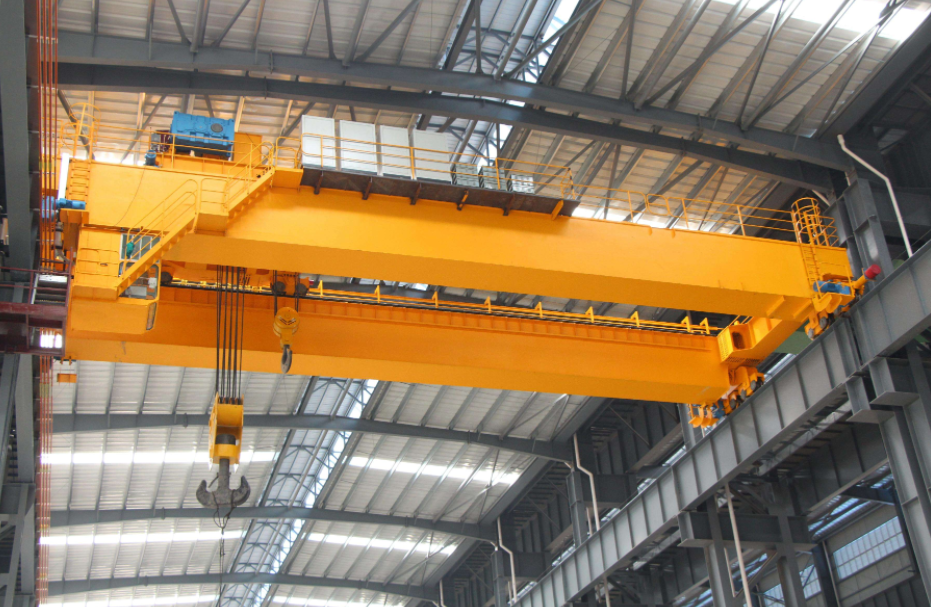Customized vs. Standard Overhead Cranes: Impact on Price
- blog@ellsenbridgecrane.com
- Dec 4, 2024
- 4 min read
Overhead cranes play an essential role in industries requiring the efficient lifting and transportation of heavy loads. Whether used in manufacturing, construction, warehouses, or shipyards, these cranes are critical for productivity and safety. However, one major consideration when purchasing an overhead crane is whether to opt for a standard model or a customized solution. Both options come with distinct advantages, limitations, and implications for price. This article explores how customization impacts the overhead crane price and provides insights to help you make an informed decision.

Understanding Standard Overhead Cranes
Standard overhead cranes are pre-designed models produced in bulk. These cranes typically follow a set of specifications that cater to common industrial needs, such as specific load capacities, spans, lifting heights, and operational features.
Advantages of Standard Overhead Cranes:
Cost-Efficiency: Mass production reduces manufacturing costs, making these cranes more affordable compared to customized options.
Shorter Lead Times: Standard cranes are often readily available or have quicker production times due to established designs and manufacturing processes.
Reliability: With tried-and-tested designs, standard cranes are reliable and have fewer potential risks during operation.
Limitations of Standard Overhead Cranes:
Limited Flexibility: Standard cranes may not fully meet the specific requirements of certain applications, such as unusual spans, lifting heights, or environmental conditions.
Generic Features: The lack of specialized features might hinder optimal efficiency in unique industrial operations.
Understanding Customized Overhead Cranes
Customized overhead cranes are designed and manufactured to suit specific operational requirements. These cranes can be tailored in terms of load capacity, span, lifting height, speed, control modes, and additional features like anti-sway systems, automation, or special environmental adaptations.
Advantages of Customized Overhead Cranes:
Tailored Performance: Customization ensures the crane meets exact operational needs, enhancing efficiency and productivity.
Adaptability to Challenging Environments: Customized cranes can be designed to function in extreme temperatures, hazardous conditions, or other unique scenarios.
Future-Proof Solutions: Custom features can be integrated to accommodate potential operational growth or evolving industry needs.
Limitations of Customized Overhead Cranes:
Higher Costs: Custom designs often require specialized engineering, materials, and production processes, significantly increasing the cost.
Longer Lead Times: Designing and manufacturing a customized crane takes longer than producing a standard model.
Complex Installation and Maintenance: Customized features may require specialized installation and ongoing maintenance, adding to the lifecycle costs.

Factors Affecting the Price of Standard and Customized Overhead Cranes
The price difference between standard and customized overhead cranes is influenced by several factors:
Design and Engineering
Standard cranes leverage pre-existing designs, reducing engineering time and costs.
Customized cranes require detailed consultations, engineering calculations, and unique designs, increasing costs significantly.
Materials
Custom cranes may use specialized materials for high-performance requirements or extreme environments, adding to the cost.
Features and Technology
Standard models typically have basic features. Adding advanced features like variable frequency drives, remote controls, or IoT-enabled systems in a customized crane increases both the initial cost of eot crane and long-term value.
Production Scale
The mass production of standard cranes allows for economies of scale, reducing unit costs. Customization involves smaller production runs, making each unit more expensive.
Installation and Integration
Standard cranes often have simpler installation processes. Custom cranes might require additional infrastructure, specialized installation teams, or adjustments to integrate into existing systems.
Lead Time
The faster production and delivery of standard cranes translate to cost savings. Longer lead times for customized cranes may also include indirect costs such as downtime or delays in project timelines.
When to Choose Standard Overhead Cranes
Standard overhead cranes are ideal for industries with straightforward material handling requirements. They are cost-effective and sufficient for operations that do not require specialized features.
Examples of applications:
General manufacturing
Warehousing and logistics
Automotive assembly lines
Companies with limited budgets or tight timelines often benefit from choosing standard models.
When to Choose Customized Overhead Cranes
Customized cranes are suitable for industries with unique operational requirements, challenging environments, or a need for advanced technologies.
Examples of applications:
Heavy equipment manufacturing
Aerospace and defense
Hazardous industries like oil and gas or chemical plants
Extreme weather operations, such as Arctic conditions
For organizations prioritizing efficiency, safety, and adaptability, investing in a customized crane can yield significant long-term returns.
Calculating the Total Cost of Ownership (TCO)
When evaluating the price of standard vs. customized overhead cranes, it is essential to consider the total cost of ownership (TCO), which includes:
Initial Cost: Standard cranes are cheaper upfront, but customization may provide a better long-term fit for your operations.
Operating Costs: Customized cranes, with advanced features, often operate more efficiently, reducing energy and maintenance costs.
Maintenance and Repairs: Standard cranes may have readily available parts, while customized cranes might require specific replacements, potentially increasing downtime and costs.
Resale Value: Standard cranes may have a broader resale market, whereas customized cranes might appeal only to niche buyers.
Striking the Right Balance
Choosing between a standard and a customized overhead crane involves assessing your operational requirements, budget, and long-term goals. If your needs align with standard models, the cost savings and shorter lead times are attractive advantages. However, for operations that demand precision, enhanced efficiency, or adaptability, a customized crane is worth the higher initial investment.
Conclusion
The decision to choose between a standard or customized overhead crane depends on balancing immediate budget constraints with long-term operational efficiency. While standard cranes offer affordability and quick availability, customized cranes deliver tailored solutions for complex and demanding industrial needs.
By carefully evaluating your specific application, environment, and budget, you can ensure that the overhead crane you select maximizes value while meeting your operational goals. Whether you opt for a standard or customized lifting solution, the ultimate objective remains the same: boosting productivity, safety, and profitability in your material handling operations.








Comments